MAY 22, 2025: Like yesterday, we started our day with the hotel breakfast. It didn’t disappoint: whole grain breads, salads, cheeses and plenty of herring.
Unlike yesterday, when the weather was beautifully sunny, today we left the hotel in a light rain.
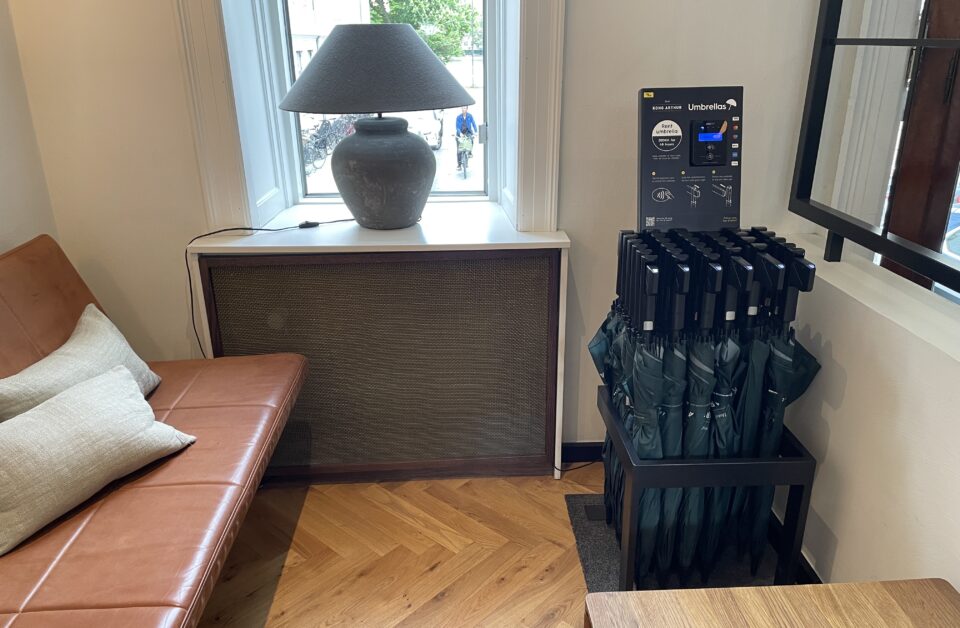

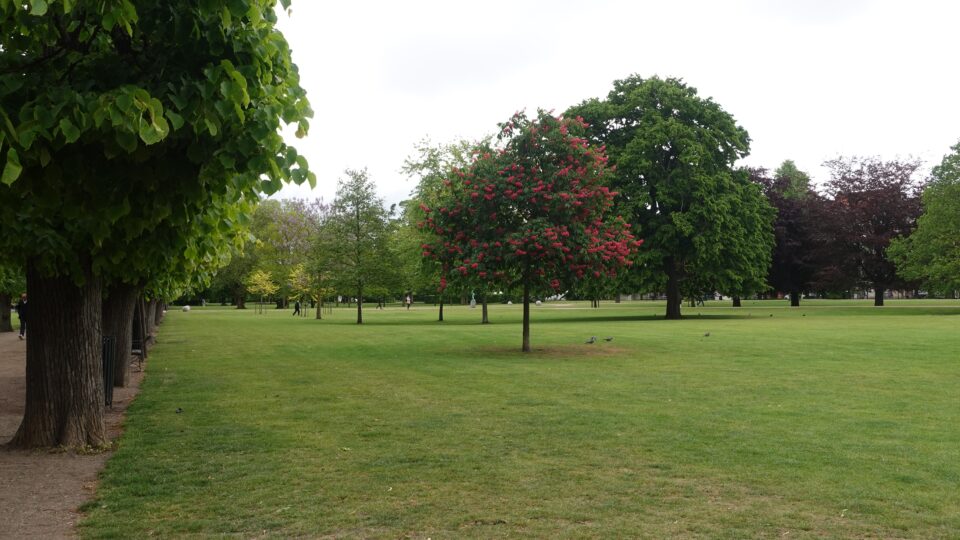
We headed towards Nyhavn Harbor, a historic 17th-century harbor known for its colorful buildings, lively waterfront cafés, and old wooden ships. Once a bustling port and home to Hans Christian Andersen, it’s now a popular tourist destination.
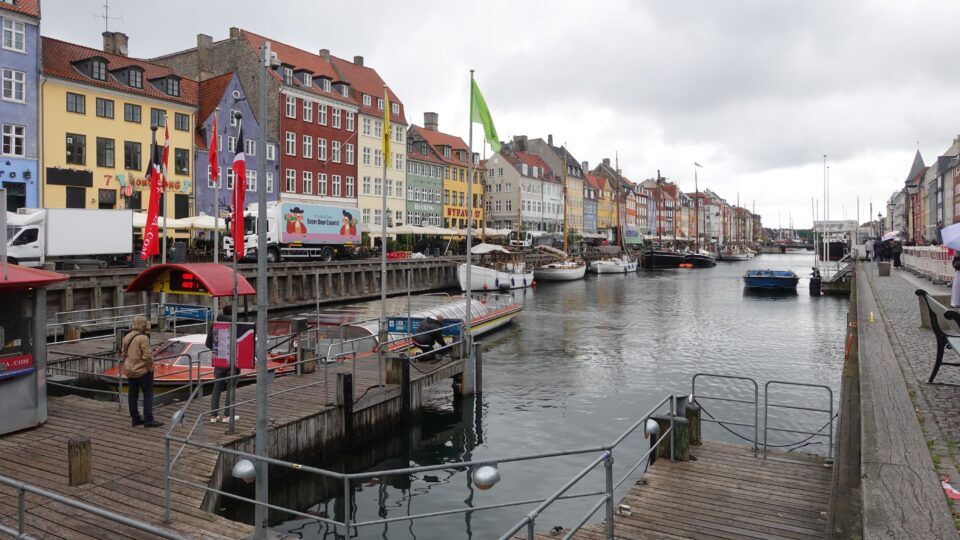

Unfortunately, shortly after reaching the harbor, a strong downpour started. We took shelter in Apotek 57, a small bakery my daughter had read about. We warmed up with tea and flaky pastries decorated with black and white sesame seeds and filled with a rich caramel cream.
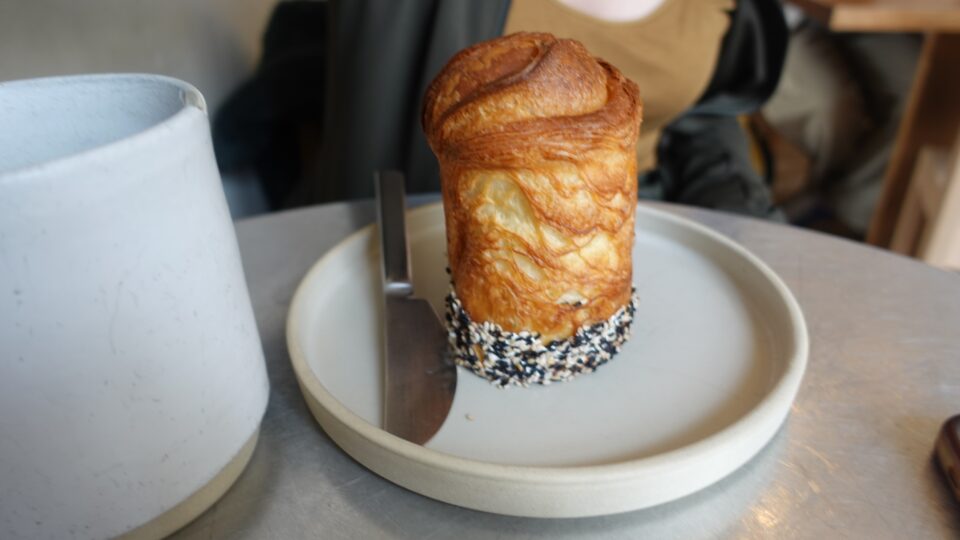
The bakery was adjacent to Nyboder, a historic district with rows of small, ochre-yellow houses with red-tiled roofs, originally built in the 17th century by King Christian IV for Royal Danish Navy personnel and their families. Though no longer exclusively for naval families, some homes are still reserved for military personnel, and the area is protected as a cultural heritage site.
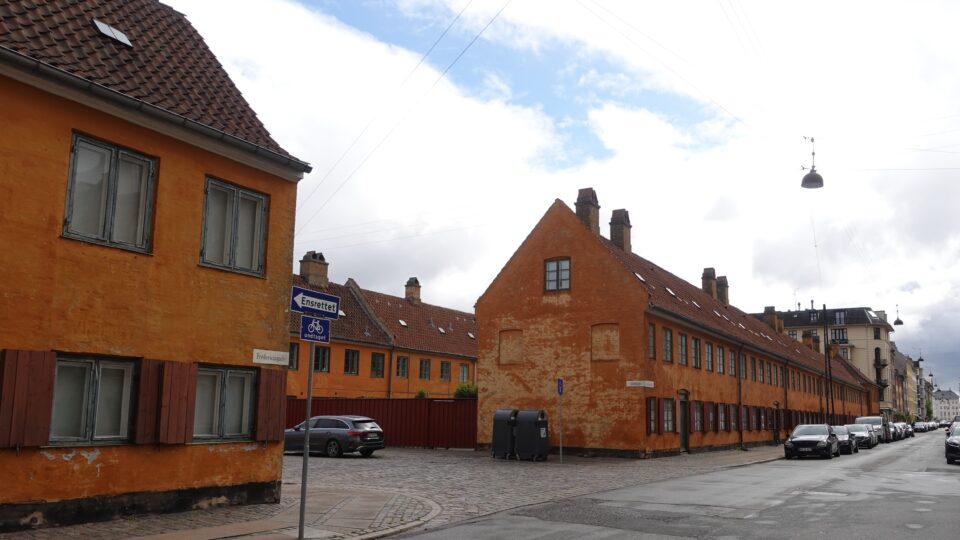
When the rain let up, we walked to the Danish Resistance Museum in Churchill Park. Inside, the museum visitors follow a circular underground path. The exhibits cover the rise of Nazism and the role of the Danish resistance and the story is told through the lives of five real Danes, each representing different facets of the occupation: resisters, collaborators, and civilians.
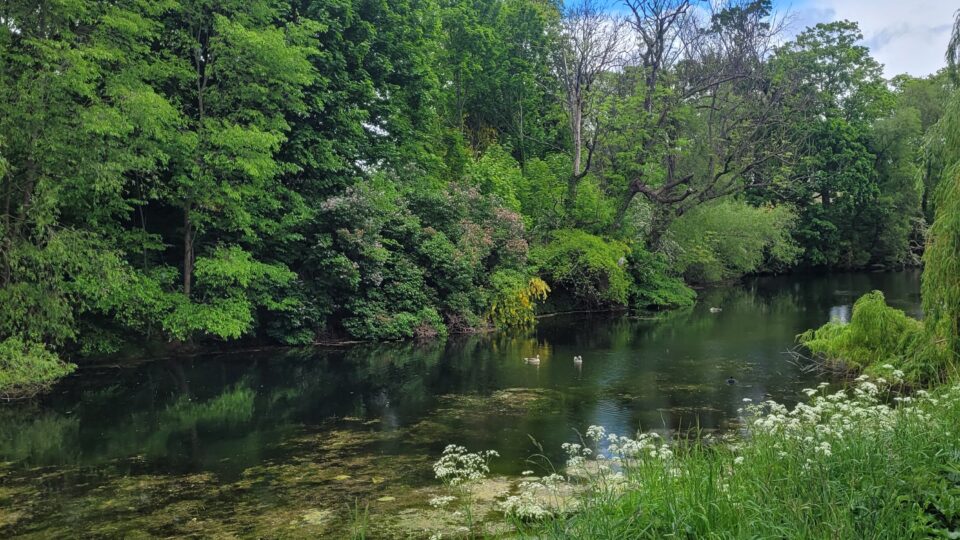
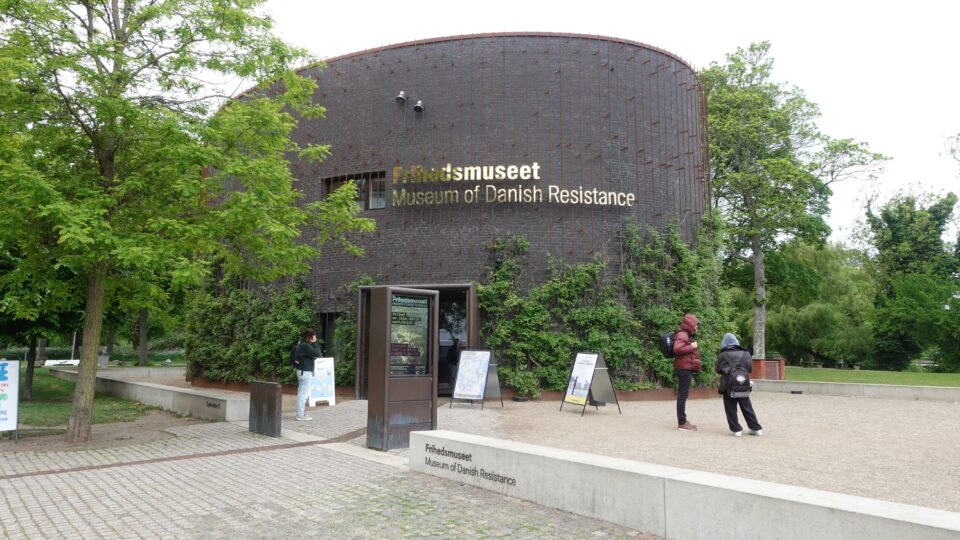

One room focused on the rescue of the Jews with a recreated fisherman’s boat.
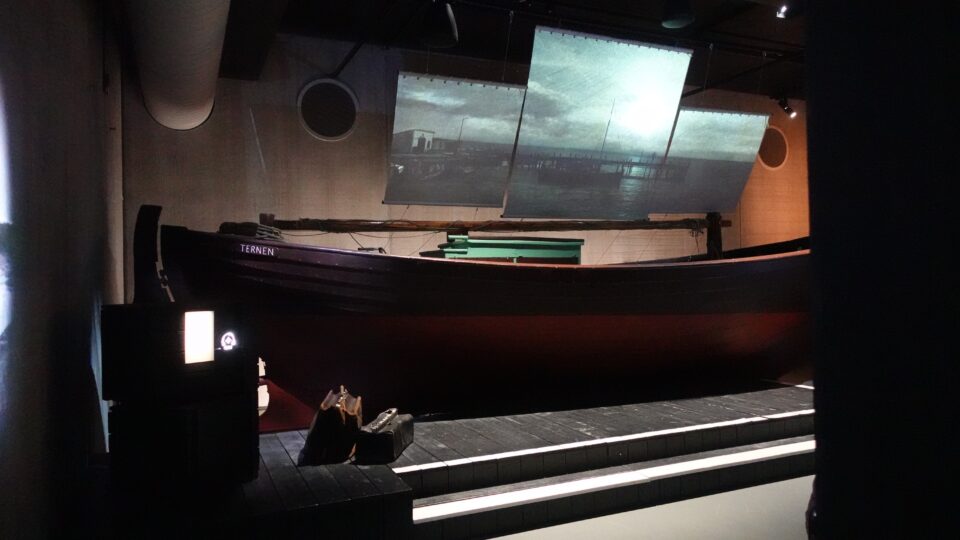
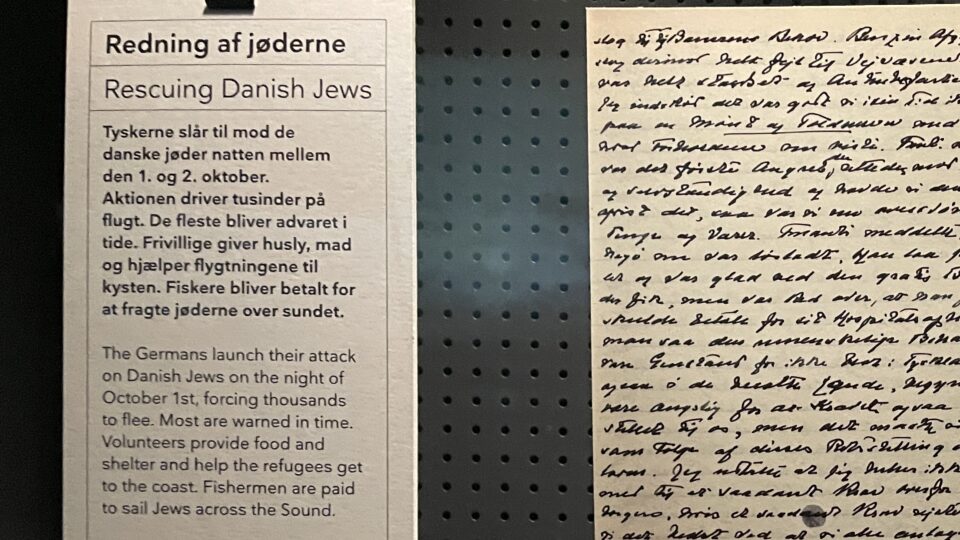
Just behind the museum is the Wounded Woman statue createdby Israeli artist Bernard Reder which depicts a group of intertwined stone nude female figures twisted together in strong support. The sculpture, unveiled in 1969, was presented by the State of Israel to the Danish people in appreciation of their support.
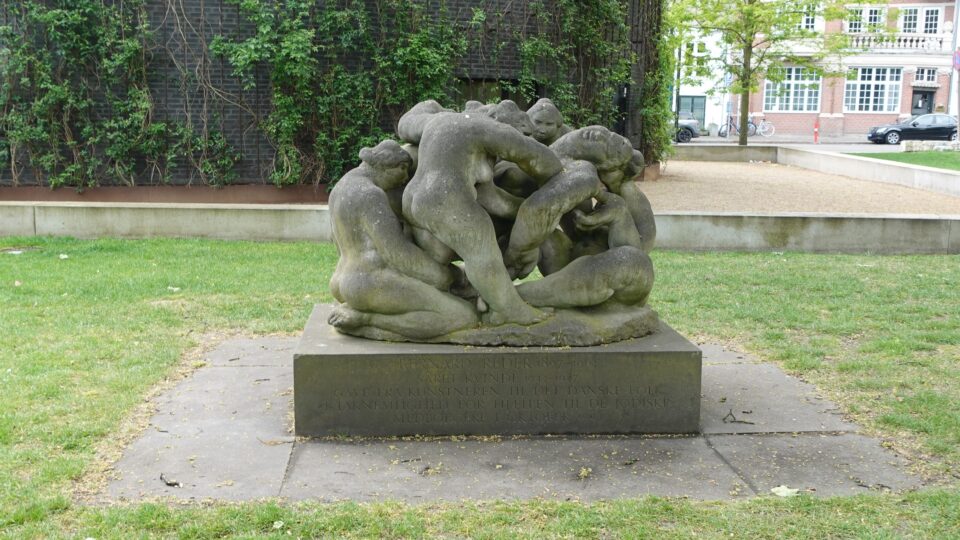
We continued along the waterfront in the drizzling rain to see the iconic the Little Mermaid statue, which—despite its fame—really is tiny! Tourists clustered around taking photos. The statue, erected in 1913, was a gift from Carl Jacobsen, son of the founder of the Carlsberg brewery, to the city of Copenhagen. It was inspired by the Hans Christian Anderson’s fairy tale of the same name.
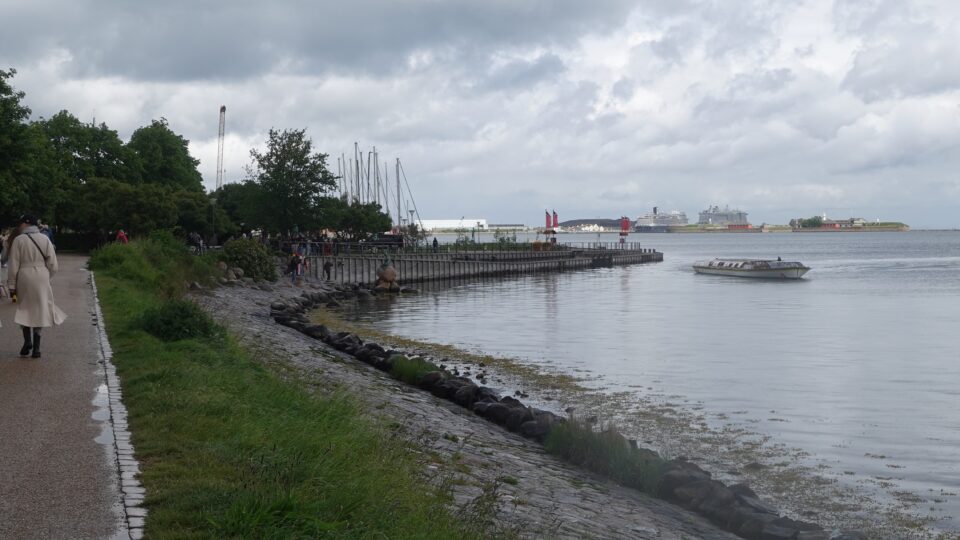

Inspired by a list of Jewish sites from the museum, we took a long walk along an elevated pathway (reminiscent of New York’s High Line), with the sea on one side and sleek modern buildings on the other. At the end of the path, near a small red lighthouse, we found a quiet memorial to the Jews and Danish communists sent to Theresienstadt. It was erected in 2008 by the Theresienstadt Association. Of the roughly 470 Danish Jews deported to Theresienstadt, almost 90% survived—a stark contrast to the fate of Jews from most other countries under Nazi control. This was due to persistent pressure from the Danish government and Red Cross, regular aid packages, public outrage in Denmark, and their treatment as political hostages.
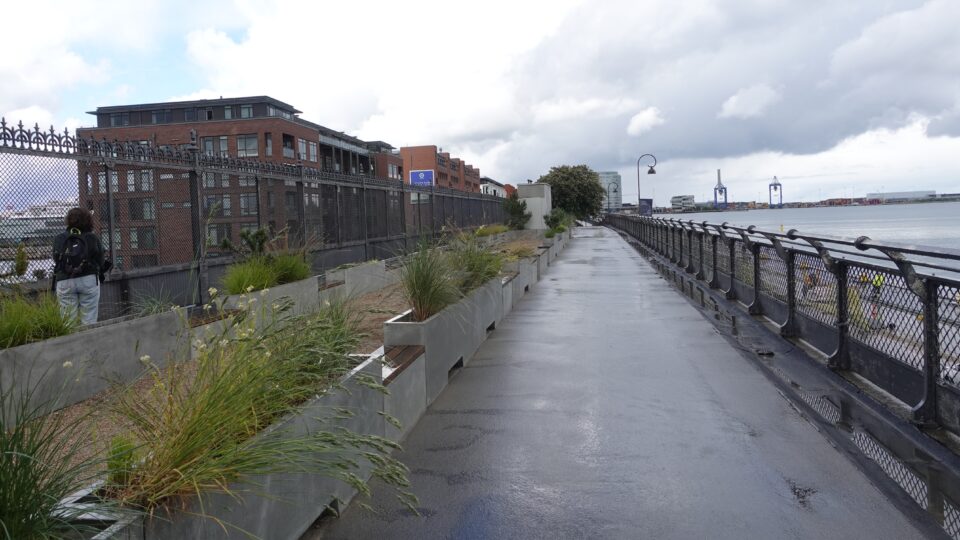


From the memorial, we took an Uber back to the city center, to the Mosaisk Nordre Begravelsesplads (Northern Jewish Cemetery). Established in 1694 in Copenhagen’s Nørrebro district, the oldest Jewish cemetery in the city contains around 5,500 burials within a walled 13,000 square meter area shaded by large trees. The last burial was in 1967 and the cemetery is now preserved as a historic site. It is a peaceful, somewhat wild space, overgrown with wildflowers smack right in the middle of the city.
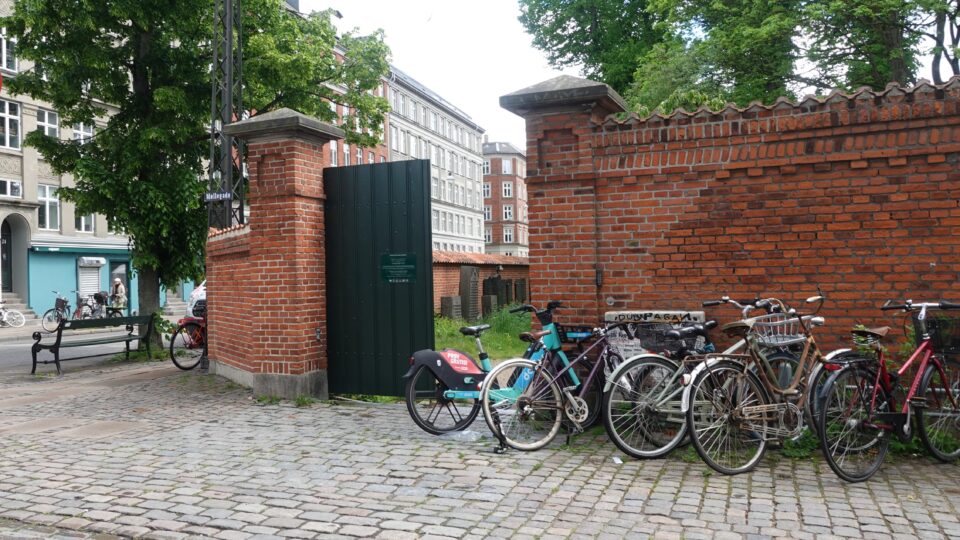
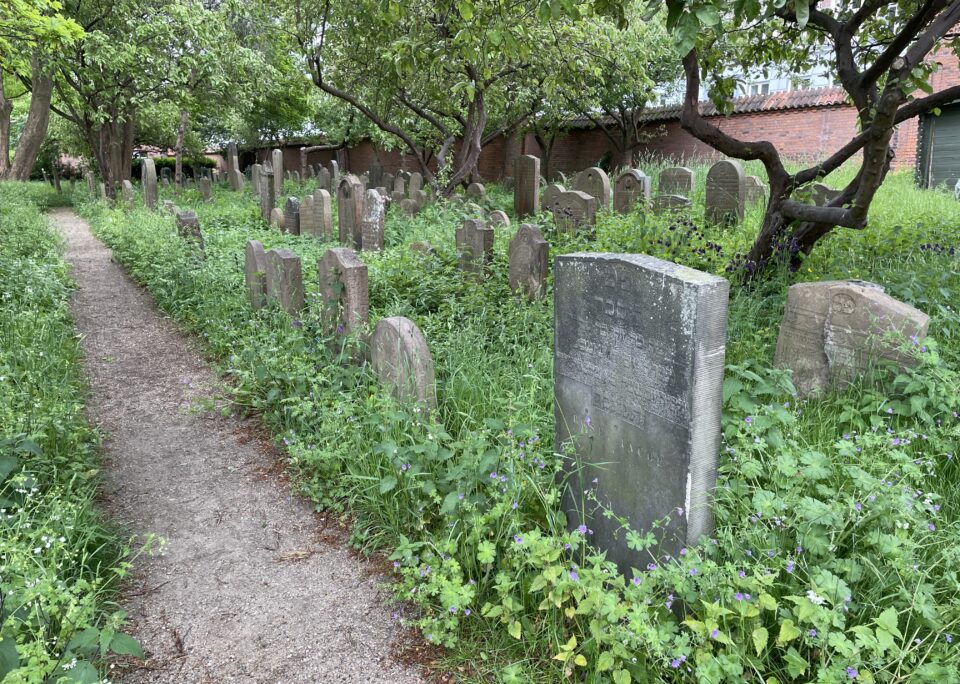
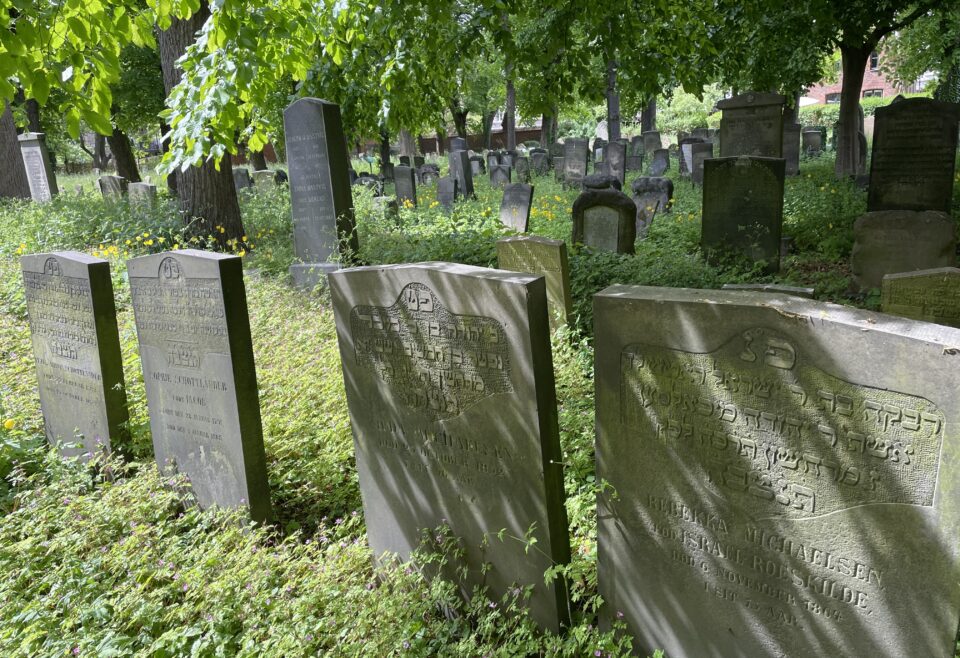
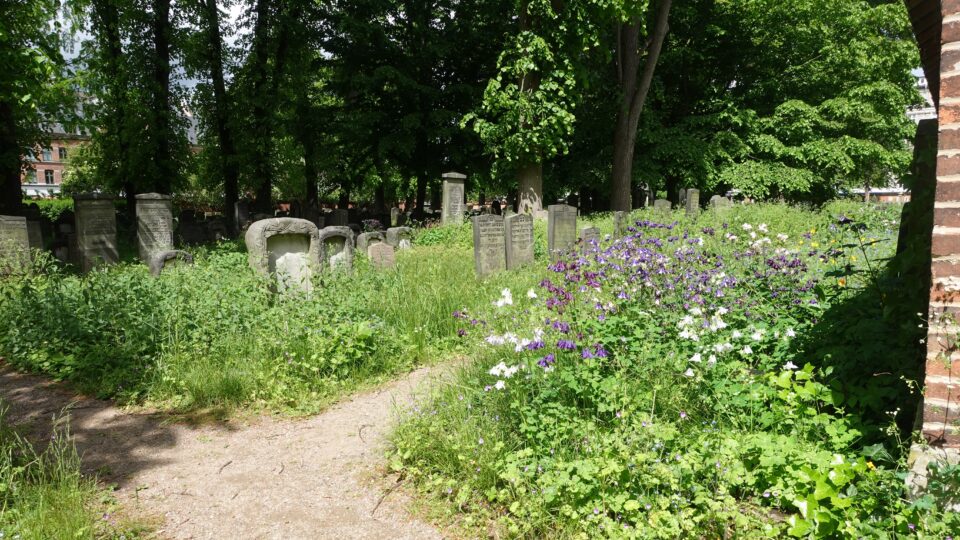
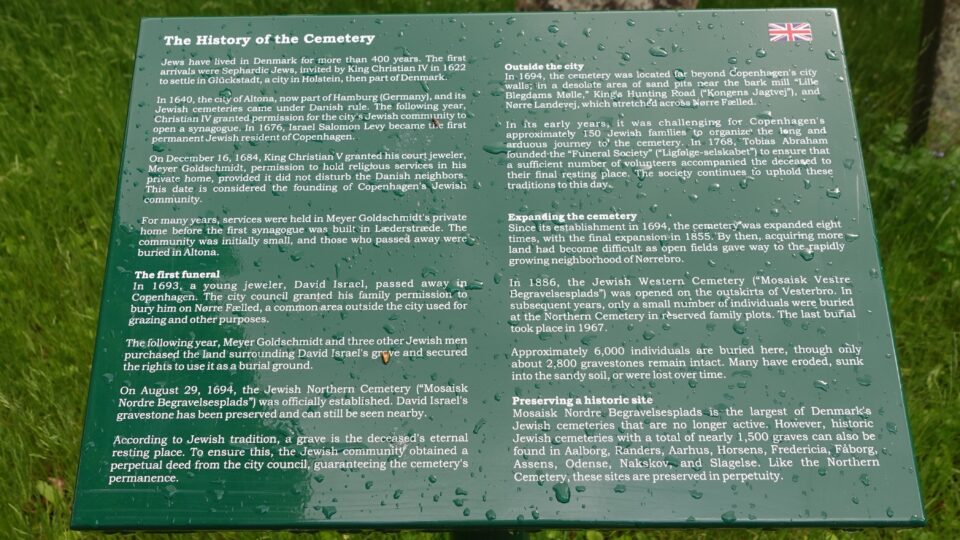
We lingered for a while before the rain returned in full force. Soaked, we ducked into a coffee shop to warm up and then a 7/11 to wait for the rain to ease up. Once the rain returned to only a drizzle, we trudged back to our hotel, drenched but satisfied—we’d seen all the Jewish Heritage sites we hoped to.
Dinner was at a small Indian restaurant across the river, where we enjoyed a vegetarian tasting menu—two appetizers, two mains, rice, and naan. The food was delicious and the service was outstanding. At the end of the meal, the waiter even helped me into my coat. I honestly can’t remember the last time someone did that.
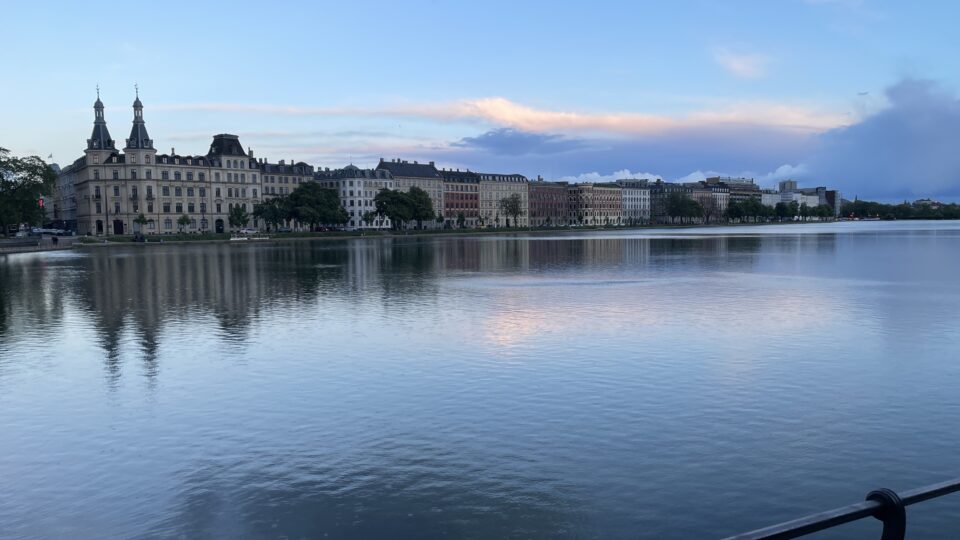
Did we feel anti-Israel sentiment in Copenhagen? There was some, but much less than in other places we have recently traveled to. Yesterday, in the library cafe, the newspaper headline photo was wounded children in Gaza. Throughout the city we saw a few Free Palestine, Genocide in Gaza and Stop Arming Israel posters. There were some people in traditional Muslin attire, but at no time did we feel uncomfortable or threatened.


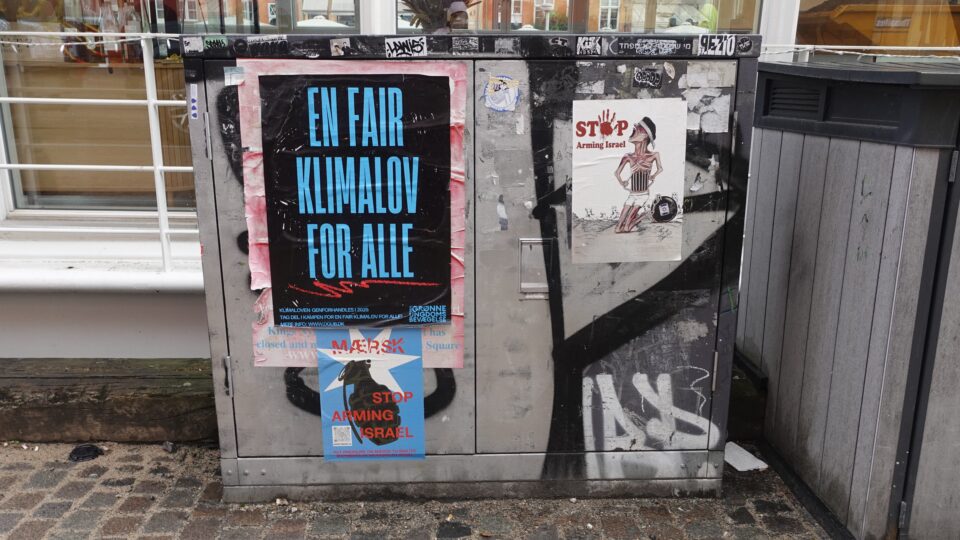

Along the waterfront we saw a Palestinian flag. This was especially interesting because on the 1st of January this year, a law came into effect in Denmark making it illegal to fly any other national flag apart from the flags of Denmark itself, Danish territories and the country’s closest neighbors. Therefore, the flags of Greenland, The Faroe Islands, Sweden, Norway, Finland, Iceland and Germany can be flown but no others. The law also bans flags that are the equivalent of national flags, such as the Palestinian flag.
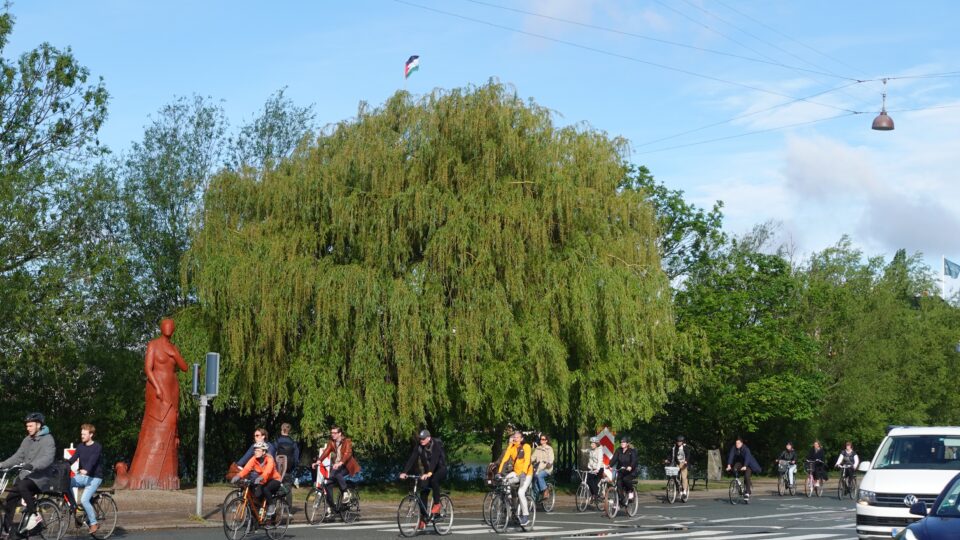
Denmark has the oldest national flag in the world. In general, you will see Danish flags everywhere – a very common symbol of national pride and unity. The flag is also associated with celebration and joy and will be seen at ceremonies like birthdays, graduations, etc.
If we had more time in Copenhagen, what would I have done? Taken a canal boat trip to see the city from a different perspective, maybe go to Tivoli gardens, a small, world-renowned amusement park in the middle of the city, visit Freetown Christiania, a unique, alternative community known for its vibrant street art, unique architecture, and alternative lifestyle, or there are several castles and museums we never saw. In other words, we could have easily filled another day here.
Instead, tomorrow morning we are picking up our rental car and beginning to explore Denmark beyond Copenhagen. If Copenhagen was any indication of what was to come, then it will be great.
——————————————
To see the exact location of the Jewish Heritage sites mentioned in this post, download the Wandering Jew app from your mobile phone App Store. To learn more about the app, see the Wandering Jew website.

Not clear how a statue of nude women shows Israel’s appreciation for Danish support. Maybe that explains why so few countries support us. 🙂